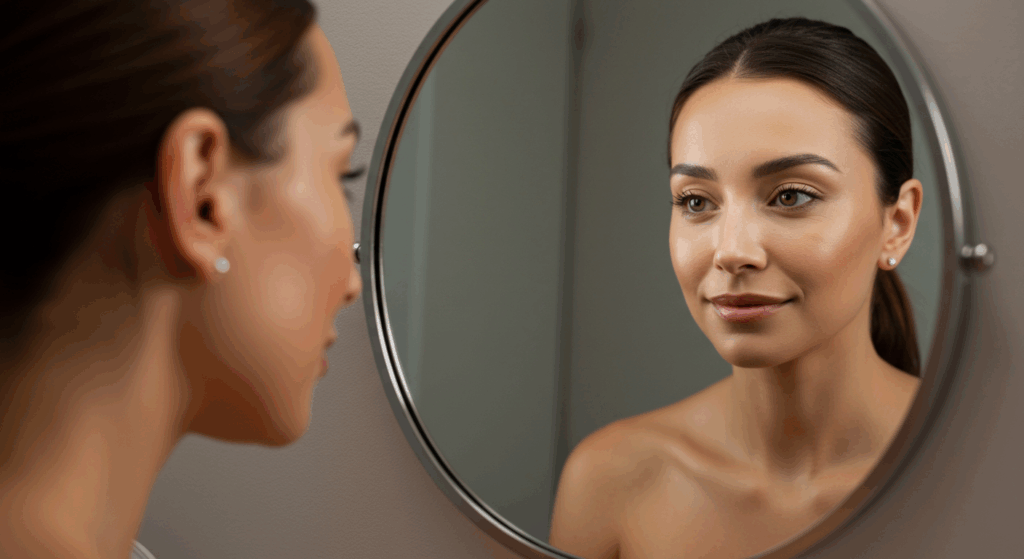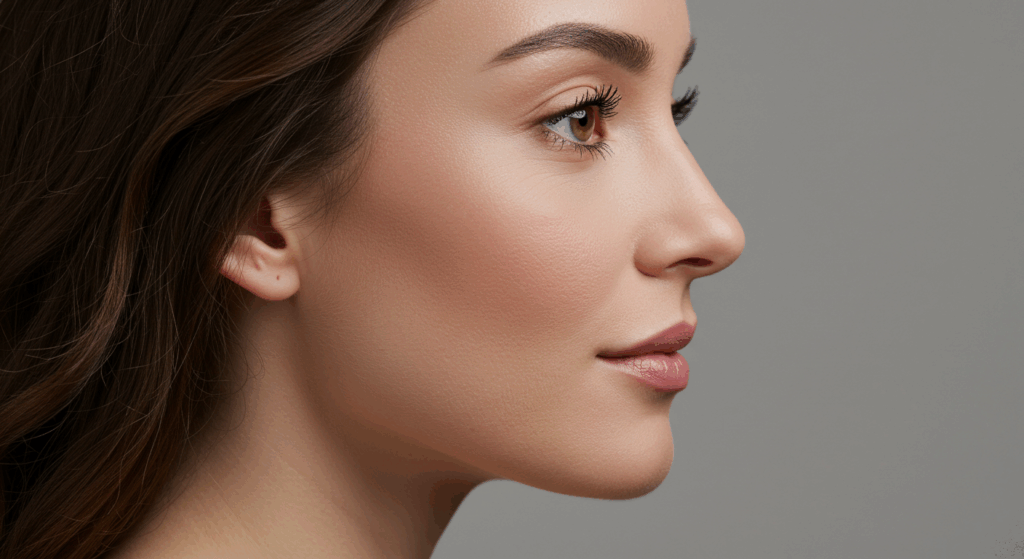The face is a canvas of identity. Every feature contributes to the harmony, balance, and character we present to the world and, more importantly, the reflection we see in the mirror. Among the most defining features of the mid-face are the cheekbones, or malar eminences. They do more than just provide structure; they influence the way light falls across the face, create youthful contours, and play a pivotal role in the perception of femininity and masculinity.
For individuals seeking to align their physical appearance with their inner sense of self, particularly through facial feminization, enhancing the cheeks is often a cornerstone procedure. Full, high cheekbones—often associated with the gentle S-shaped curve known as the ogee curve—are a classic hallmark of a feminine facial structure. When the cheeks are flat or underdeveloped, the face can appear tired, gaunt, or disharmonious.
Malar augmentation is the surgical art of enhancing the size, shape, and projection of the cheekbones. This is not about creating an exaggerated or “done” look; it’s about restoring or creating a natural-looking volume that brings the entire face into a more harmonious balance. The decision to pursue cheek augmentation is a significant step on a personal journey. It requires deep consideration, thorough research, and a clear understanding of the available options.
This comprehensive guide is designed to walk you through that research process. We will explore the fundamental approaches to malar augmentation—implants and fat grafting—delving into the nuances of each technique. We will cover the benefits, considerations, and what you can realistically expect from the procedure and recovery, empowering you with the knowledge needed to have a confident and informed discussion with a qualified surgeon.

Table of Contents
Why Cheekbones Matter: The Pillars of Facial Harmony and Feminization
Before diving into the “how,” it’s crucial to understand the “why.” What makes the cheeks so critical in the architecture of the face, especially in the context of feminization? The answer lies in both anatomy and the subtle cues of gender perception.
From an anatomical standpoint, there are general differences in craniofacial structure between sexes. Masculine faces often feature flatter, more angular cheekbones that sit lower on the face. In contrast, feminine faces tend to display more forward projection in the cheeks, with the apex, or highest point of fullness, located higher up and more laterally (towards the sides). This creates a softer, heart-shaped or oval appearance, as opposed to a more square or rectangular one.
This structural difference has a profound impact on one’s self-perception and can be a significant source of gender dysphoria. When the mid-face lacks the desired fullness, it can feel like a constant, stark reminder of a facial structure that doesn’t align with one’s identity. This isn’t a matter of simple vanity; it is a fundamental desire for the face to reflect the true self.
Effective malar augmentation achieves several key feminizing goals:
- Creates the Ogee Curve: This elegant, S-shaped curve that flows from the brow down across the cheek and into the lower face is a primary indicator of youth and femininity. Augmentation helps to create this curve.
- Lifts the Mid-Face: By adding volume, the cheeks can provide a subtle lifting effect to the surrounding tissues, combating a tired or heavy appearance.
- Softens the Overall Look: Prominent cheekbones break up the vertical lines of the face, adding soft contours that replace angularity.
- Improves Facial Proportions: Enhancing the cheeks can make other features, such as the nose or jaw, appear more balanced and proportionate within the overall facial frame.
For many, the ultimate goal of malar augmentation within a facial feminization surgery (FFS) plan is to achieve a result so natural that it simply looks like you. It’s about being able to move through the world without your facial features becoming a point of painful scrutiny, allowing you to interact with confidence and ease.

The Primary Approaches to Malar Augmentation: A Detailed Comparison
There are two gold-standard surgical techniques for enhancing the cheeks: solid cheek implants and autologous fat grafting. While both aim to increase volume, they do so in fundamentally different ways. The choice between them—or sometimes, a combination of both—depends entirely on your unique anatomy, your specific goals, the degree of change desired, and your surgeon’s expert recommendation.
1. Cheek Implants (Alloplastic Augmentation)
Cheek implants are biocompatible, pre-shaped solid materials that are surgically placed directly on the natural cheekbone to increase its projection and volume. This method provides a permanent and predictable structural change.
Materials Used for Implants
The two most common materials used for malar implants are silicone and Medpor (porous polyethylene).
- Silicone: This is the most traditional and widely used material. Silicone implants are solid, smooth, and flexible. Their primary advantage is that they are relatively easy to place and, if necessary, to remove or replace. The body forms a fibrous capsule around the implant, holding it in place without integrating into the surrounding tissue.
- Medpor (Porous Polyethylene): Medpor is a more rigid material with a porous texture, like a microscopic honeycomb. This porosity allows the patient’s own tissue to grow into the implant over time. This tissue integration makes the implant a more permanent part of the facial structure, significantly reducing the risk of it shifting or moving. However, this same integration also makes removal much more difficult if it were ever required.
The choice of material is a critical discussion to have with your surgeon, who will base their recommendation on the specific needs of your facial structure and their surgical experience.
The Surgical Technique
The placement of cheek implants is a precise and established procedure. The most common surgical approach is the intraoral incision.
- Incision: The surgeon makes a small incision inside the mouth, in the gum line above the upper teeth. This is the preferred method as it leaves no visible external scars.
- Pocket Creation: A precise pocket is then carefully created directly over the malar bone, under the soft tissue and muscle. This pocket is sized to fit the chosen implant perfectly.
- Implant Placement: The sterilized implant is inserted through the incision and meticulously positioned within the pocket, ensuring it sits symmetrically and provides the desired contour.
- Closure: Once the surgeon is satisfied with the position, the small incision inside the mouth is closed with dissolvable sutures.
Pros and Cons of Cheek Implants
Advantages:
- Predictable and Permanent Results: Implants provide a one-and-done, permanent structural change. The volume and shape you get are precisely what was planned.
- Significant Structural Augmentation: For those needing a dramatic increase in projection and definition, implants are unparalleled. They can fundamentally alter the bone structure’s appearance.
- Customizable Shapes: Implants come in a wide variety of shapes and sizes (malar, submalar, or combined) to address different areas of the cheek for a truly customized result.
Considerations and Potential Risks:
- Foreign Body: As a foreign material, there is a very small risk of infection, rejection, or adverse reaction.
- Risk of Malposition or Asymmetry: The skill of the surgeon is paramount. If not placed perfectly, implants can shift, leading to asymmetry.
- Sensation Changes: Temporary or, in very rare cases, permanent numbness in the cheek or upper lip can occur due to stretching or irritation of nearby sensory nerves.
- “Unnatural” Feel: While modern techniques make this rare, an improperly sized or placed implant can sometimes be felt at the edges or look unnatural.
2. Fat Grafting (Autologous Fat Transfer)
Fat grafting, also known as fat transfer, is a more organic approach to volume enhancement. It uses your own body’s fat—a living tissue—to sculpt and fill the cheeks. This procedure is essentially a two-in-one, involving both liposuction and precision injections.
The Three-Stage Process
Fat grafting is a meticulous process that requires artistry and technical skill from the surgeon.
- Harvesting: The process begins with gentle liposuction to harvest fat from a donor area on your body where there is an adequate supply. Common donor sites include the abdomen, flanks (“love handles”), or thighs. This provides the secondary benefit of contouring the donor area.
- Purification and Processing: The harvested fat is not immediately ready for injection. It contains blood, oil, and other fluids. The fat is processed—often by being spun in a centrifuge or filtered—to separate the pure, viable fat cells from the other components. This purification step is critical to maximizing the survival rate of the transferred fat.
- Injection (Placement): The purified fat is then carefully injected into the cheeks using a special, fine-tipped cannula. The surgeon injects tiny droplets of fat in multiple layers and directions. This micro-droplet technique ensures a smooth contour and maximizes the blood supply to each newly transferred fat cell, which is essential for its survival.
Pros and Cons of Fat Grafting
Advantages:
- Completely Natural: Because it uses your own tissue, there is no risk of rejection or an allergic reaction. The results look and feel completely natural.
- Living and Dynamic: The transferred fat becomes a living part of your face, with a rich blood supply.
- Dual Benefit: You gain volume in your face while slimming down another area of your body.
- Excellent for Soft Volume: Fat is ideal for adding soft, subtle volume and improving skin quality, rather than creating sharp, angular definition.
Considerations and Potential Risks:
- Unpredictable Survival Rate: Not all of the transferred fat will survive. Surgeons typically overfill slightly to compensate, but the final amount of volume retained can vary from person to person (generally between 50-80%). This means a second session might be needed to achieve the desired result.
- Less Structural Change: Fat is soft tissue. It cannot provide the same degree of sharp projection or architectural change as a solid implant. It’s for volume, not bone reshaping.
- Results Can Fluctuate: Because the transferred fat cells are living tissue, they can shrink or expand if you lose or gain a significant amount of weight in the future.
- Requires Donor Fat: This procedure is only an option for individuals who have sufficient excess fat in a donor area.

Implants vs. Fat Grafting: Making the Right Choice for You
The decision between implants and fat grafting is one of the most important conversations you will have with your surgeon. A truly expert FFS surgeon will guide you based on a thorough analysis of your facial anatomy and a deep understanding of your personal goals.
Here is a simplified framework to help you think about which option might be better suited for different needs:
You might be a better candidate for CHEEK IMPLANTS if:
- Your primary goal is structural change: You have flat malar bones and need significant forward or lateral projection to create a more feminine bone structure.
- You desire a permanent, one-time result: You want the most predictable and lasting outcome from a single surgery.
- You are very lean: You do not have enough excess body fat to serve as a viable donor site.
- You want sharp definition: Your goal is to create distinct, high cheekbones with clear definition.
You might be a better candidate for FAT GRAFTING if:
- Your primary goal is soft volume: You have a good underlying bone structure but have lost volume due to age or genetics, resulting in a hollow or gaunt look.
- You want an all-natural approach: The idea of a foreign implant is unappealing, and you prefer to use your own body’s tissue.
- You desire subtle, natural contours: Your goal is a gentle rejuvenation and softening of the mid-face rather than a dramatic architectural change.
- You have adequate donor fat and are open to the possibility of a touch-up procedure.
The Hybrid Approach: The Best of Both Worlds
In some cases, the optimal result is achieved by combining both techniques. A surgeon might place a moderately sized implant to create the foundational bone structure and projection, and then layer fat grafts over the implant and in the surrounding areas. This approach uses the implant for architectural support and the fat for creating a soft, natural-looking final contour, smoothing the transition between the implant and the surrounding tissue.
The Surgical Journey: What to Expect from Consultation to Recovery
Understanding the entire process can significantly alleviate the natural anxiety that comes with deciding on surgery.
The Consultation: Your Most Important Step
The consultation is where your journey truly begins. This is not just a meeting; it’s a collaborative planning session. A high-quality consultation should include:
- A deep discussion about your goals, fears, and what you hope to achieve.
- A thorough physical examination of your face.
- Often, 3D imaging (like VECTRA 3D) that allows the surgeon to simulate the potential results of different implant sizes or fat volumes on a model of your own face.
- A detailed explanation of the recommended procedure(s), including the pros, cons, and potential risks.
- A review of the surgeon’s before-and-after photos of patients with similar facial structures and goals to your own.
This is your opportunity to ask questions. Come prepared. Ask about their experience, the number of procedures they perform, and their specific approach. The goal is to leave feeling confident, heard, and fully informed.
The Recovery Timeline
Recovery from malar augmentation varies depending on the technique used and whether it was performed as a standalone procedure or as part of a larger FFS plan.
- First 72 Hours: This is the period of maximum swelling and discomfort. Your face will feel tight and swollen. If you had intraoral incisions, you will be on a liquid or very soft food diet. Pain is typically managed well with prescribed medication.
- Week 1: Swelling remains significant, but begins to subside. Bruising may appear. You will likely feel well enough to be up and about for light activity. Sleeping with your head elevated is crucial to help reduce swelling.
- Weeks 2-4: A major turning point. The majority of the noticeable swelling and bruising will resolve. You will start to see the new contours of your cheeks emerging. You can typically return to work and social activities, though strenuous exercise should still be avoided.
- Months 1-6: The final results settle. The last bits of subtle swelling will disappear, and if you had fat grafting, the surviving fat cells will have established their new blood supply. The tissues will soften, and the final, beautiful result will be apparent. Patience is key during this refinement phase.
Finding a Qualified Surgeon: The Most Critical Decision of All
The success of your malar augmentation—and any facial surgery—is almost entirely dependent on the skill, experience, and artistry of your surgeon. Choosing the right one is the single most important decision you will make.
Look for a surgeon who is:
- Board-Certified: This is the absolute minimum requirement, ensuring they have met rigorous standards of training and safety. Look for certification by a recognized plastic surgery board.
- A Specialist in Facial Surgery: A general plastic surgeon is not the same as a surgeon who specializes in the complexities of the face, and especially one who has extensive experience with Facial Feminization Surgery. FFS requires a unique artistic eye and understanding of gendered facial aesthetics.
- An Excellent Communicator: Your surgeon should be someone you can talk to openly. They should listen to your goals, respect your identity, and make you feel like a partner in your own care.
- Transparent with a Strong Portfolio: They should be able to show you numerous before-and-after examples of their work on patients similar to you. The results should look natural, harmonious, and aligned with the goals of feminization.
- Well-Reviewed on Independent Platforms: Look for reviews on third-party sites and forums where patients share their honest experiences. This provides an unbiased view of the patient experience from consultation to final result.
A Final Thought on Your Journey
Choosing to undergo malar augmentation is a profound step towards creating harmony between your inner identity and your outward appearance. It is a decision rooted in the desire for authenticity and self-acceptance. By understanding the differences between implants and fat grafting, familiarizing yourself with the surgical journey, and taking the time to find a truly qualified and empathetic surgeon, you are empowering yourself to achieve a result that is not only beautiful but, most importantly, feels true to you. This journey is about more than just aesthetics; it’s about seeing your true self in the reflection and stepping into the world with renewed confidence.
External Resources for Further Reading:
- American Society of Plastic Surgeons: Cheek Augmentation Page
- A peer-reviewed article on facial feminization techniques from the National Institutes of Health: Facial Feminization Surgery: A Systematic Review
Visit Dr.MFO Instagram profile to see real patient transformations! Get a glimpse of the incredible results achieved through facial feminization surgery and other procedures. The profile showcases before-and-after photos that highlight Dr. MFO’s expertise and artistic vision in creating natural-looking, beautiful outcomes.
Ready to take the next step in your journey? Schedule a free consultation with Dr. MFO ( Best Facial Feminization Surgeon for You) today. During the consultation, you can discuss your goals, ask any questions you may have, and learn more about how Dr. MFO can help you achieve your desired look. Don’t hesitate to take advantage of this free opportunity to explore your options and see if Dr. MFO is the right fit for you.









